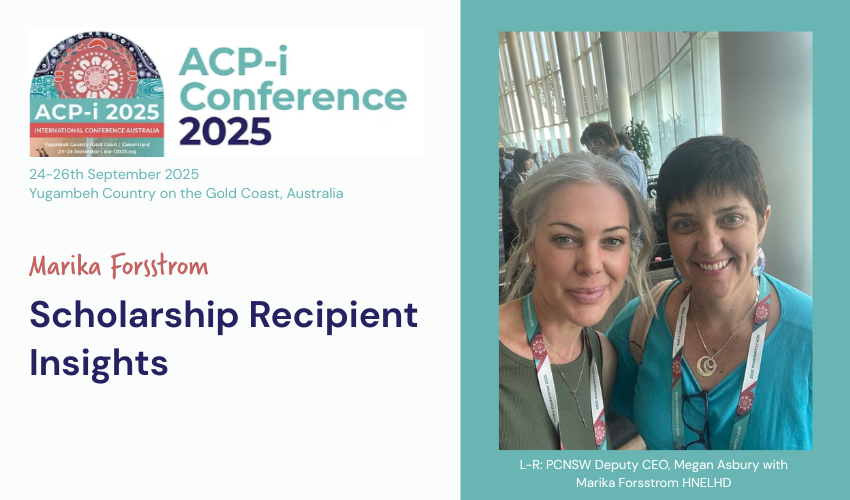Palliative Care NSW (PCNSW) with the funding support of the NSW Ministry of Health was delighted to provide one of our members with a scholarship to the Advance Care Planning International Conference held on the Gold Coast in late September. Our scholarship recipient was Marika Forsstrom, a Registered Nurse based in the rural town of Quirindi in the Hunter New England Local Health District (HNELHD). Marika is actively pursuing a career in palliative care and will shortly complete her post graduate certificate in palliative care as well as the HNE Nurse Link Palliative Care course. She is strongly supported by her local community and we were delighted to have provided this opportunity for further learning on advance care planning, as well as the valuable opportunity to connect with peers.
Here are Marika’s top three presentations from the conference.
1. Mirror of the mind: How personal preferences shape perceptions of partners end-of-life wishes (see abstract below)
Dr Clément Meier, Senior researcher, University of Lausanne.
Key takeaway: It is important to speak to your partner about what your wishes are. They will have a different outlook than you and if left for them to decide, you may get care that is misaligned with your wishes. The same goes for your partner and their wishes. We think we know what each other would want but the reality is that we do not.
2. Community Perspectives Panel
Annaliese Holland, Patient and Ambassador in South Australia. Annaleise lives with a rare terminal disease that at 25 has stolen her future. She’s passionate about Creating a legacy of love and change for all generations especially making others aware and advocating for improved health outcomes.
Key takeaway: Annaliese spoke about being young and living with a life-limiting illness. She has experienced first-hand her health choices being ignored, or overridden by health professionals and family members because of her age and not considering what she wants as the person living with the illness. Younger people have the same choices as older people and need to be heard.
3. Reflecting on attitudes and experiences of clinicians – The qualitative interview journey when building immersive education (see abstract below)
Avril Egerton, End Of Life Care CNC, Integrated & Community Health (Palliative Care NSW Member)
Key takeaway: A lot of health professionals would prefer to exhaust all treatment options for a patient, even if they look like they are likely to die this admission, before going down the EOL path. Difficult conversations are also avoided, especially with resistant families, leading to an NFR being done 24hrs before death. Not good outcomes for the patient due to over treatment causing more harm than good.
After attending the ACPi, I realised that communication between patients, families and health professionals is very poor when it comes to EOLC, resulting in poor patient outcomes. We all need to learn to speak openly about death and make our wishes known.
Abstracts for Marika’s top-rated presentations
Source:https://www.acp-i2025.org/program
Mirror of the mind: How personal preferences shape perceptions of partners end-of-life wishes
Dr Clément Meier, Senior researcher, University of Lausanne
Objectives:
Spouses frequently serve as surrogate decision-makers at the end of life, yet evidence suggests they frequently misinterpret each other’s preferences. This study examines the extent to which individuals’ own end-of-life preferences influence their predictions about their partner’s preferences and identifies key factors associated with prediction accuracy within older couples.
Methods:
We analyzed data from 654 partnered adults aged 58 and older who participated in the Swiss sample of Wave 8 (2019/2020) of the Survey of Health, Ageing and Retirement in Europe (SHARE). Participants reported their own and their partner’s preferences across 14 end-of-life care domains. Prediction accuracy was defined as concordance between a respondent’s prediction and the partner’s self-reported preference. Using probit regression models, we assessed whether sharing the same preferences increased prediction accuracy, controlling for sex, age, education, language region, self-rated health, and other socio-demographic factors.
Results:
The proportion of respondents who reported the same preferences as their partners ranged from 36.5% (for choosing where to die) to 90.4% (for life-prolonging treatment), highlighting substantial variation across different end-of-life and medical treatment preferences. Respondents were substantially more likely to correctly predict their partner’s preferences when the two shared the same views. This pattern was consistent across all 14 domains, with average marginal effects ranging from 0.38 to 0.61 (p < 0.001). In contrast, socio-demographic characteristics showed no systematic association with prediction accuracy.
Discussion:
Our findings reveal a strong projection bias in surrogate decision-making: individuals tend to rely on their own preferences to infer those of their partner. While shared preferences can enhance prediction accuracy, they may also obscure the absence of real dialogue. These results highlight the importance of advance care planning approaches that actively engage both members of a couple to facilitate mutual understanding and reduce the risk of misinterpretation.
Reflecting on attitudes and experiences of clinicians’. The qualitative interview journey when building immersive education.
Avril Egerton, End Of Life Care CNC, Integrated & Community Health
Background
Good communication to facilitate advance care planning can support care that meets person and family needs at the end-of-life (EoL). Discussions about advance care planning are not always delivered in a timely manner and may be ineffective or of poor quality. There is increasing recognition for the need of person-centred, EoL care communication for patients and their families with life limiting illnesses. We explored the experiences and needs of medical, nursing, and allied health staff to inform the development of a multi-component intervention to improve communication and shared decision making for persons at end-of-life. The content will be based on the research findings. The intervention will include an online learning package with training videos showing novice and skilled responses and simulation lab training using AI-driven conversational agents, and virtual reality to practice and refine communication strategies.
Method
20 qualitative interviews were conducted with medical, nursing, and allied health in a large, urban hospital in New South Wales, Australia. The semi structured interviews allowed for discussions which reflected on professional and personal experiences of the participants and how these shape interactions for the future. Interviewees varied in years of experience, specialty, and gender. .
Findings
The findings showed senior clinicians feel burden for fear of making errors. Therefore, often focus on treatment and length of life rather than quality of life, timing and prognostication. This over-medicalisation can lead to poor advance care planning and unwarranted costs associated with over diagnosis. This medical model is supported by a hierarchical bureaucracy which discourages junior clinicians from engaging in EoL care matters and reduces their agency and confidence. Junior clinicians frequently learn on the job and perpetuate these processes and behaviours. Clinicians identified a need for early and frequent EoL conversations with clinicians, patients and families. All interviewees described a demand for formal, supportive and ongoing education initiatives in EoL care.
Unique Contribution/Implication!
Interview findings provide valuable insights that will help ensure the intervention is tailored to specific context, addressing the complex and sensitive nature of EoL communication. By focusing on key areas such as goals of care, resuscitation plans, organ donation, and voluntary assisted dying, clinicians will have the opportunity to repeatedly practice these challenging conversations. This approach not only enhances their confidence but also reduces peer vulnerability, ultimately empowering them to engage in these important discussions with skill and compassion, leading to better outcomes for both patients and healthcare providers.


